Accurate measurement of the internal and external clearance of bushings is essential for ensuring that these components function properly and efficiently in machinery.
Bushings are critical for reducing friction, supporting rotating shafts, and preventing wear in various industrial applications.
When the clearance between the bushing and its mating components is not properly measured or maintained, it can result in misalignment, increased friction, and premature wear.
In this blog, we will guide you through the process of measuring both the internal and external clearance of bushings, and explain why this is essential for the longevity of your equipment.
What is Clearance in Bushings?
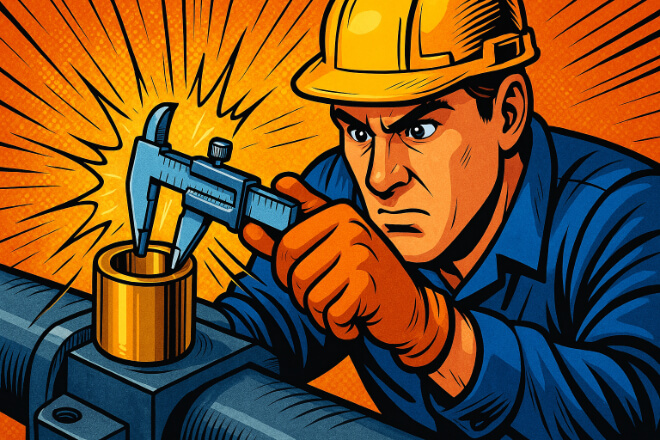
Clearance refers to the space or gap between the bushing and the shaft (for internal clearance) or the housing (for external clearance).
The correct clearance ensures that the bushing operates smoothly without too much friction or wear.
If the clearance is too tight, it can lead to excessive friction, heat generation, and wear, while if the clearance is too loose, it can cause instability, vibrations, and misalignment.
1). Internal Clearance
Internal clearance is the gap between the inside diameter of the bushing and the shaft it supports. It is critical for ensuring the bushing rotates smoothly with minimal friction and wear.
2). External Clearance
External clearance is the gap between the outside diameter of the bushing and the housing it fits into. This clearance helps ensure the bushing remains secure while allowing enough room for the bushing to move or adjust under load.
Why is Measuring Clearance Important?

Measuring the internal and external clearance of bushings is important for several reasons:
Optimal Performance: Proper clearance allows the bushing to work efficiently, minimizing friction and wear.
Prevention of Damage: Too much or too little clearance can lead to component damage, including premature wear, overheating, and even failure.
System Efficiency: Accurate clearance measurements ensure that machinery operates smoothly, which helps to improve overall system efficiency and reduce energy loss.
Tools for Measuring Bushing Clearance
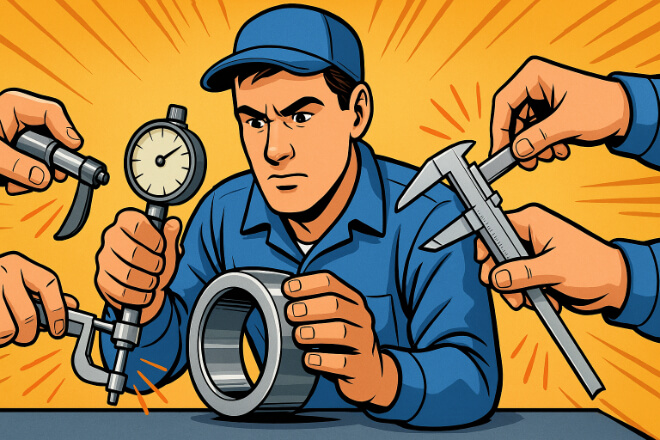
To measure the internal and external clearance of bushings accurately, certain tools are required. These tools help ensure precision and consistency in your measurements.
1). Micrometer
A micrometer is a precision instrument used to measure the outside and inside diameters of a bushing. It is particularly useful for measuring external clearance.
Use for External Clearance: To measure external clearance, use a micrometer to measure the outer diameter of the bushing.
Use for Internal Clearance: Use an inside micrometer to measure the internal diameter of the bushing.
2). Dial Bore Gauge
A dial bore gauge is used to measure the internal diameter of the bushing and the clearance between the bushing and the shaft.
Use for Internal Clearance: The dial bore gauge is inserted into the bushing to measure the gap between the bushing and the shaft, providing a highly accurate measurement.
3). Calipers
Calipers are versatile tools used for both internal and external measurements.
They can measure the outer diameter of the bushing and the inner diameter when used with the correct attachments.
Use for External Clearance: Use calipers to measure the external diameter of the bushing.
Use for Internal Clearance: Use the internal measurement jaws of the caliper to measure the inside diameter of the bushing.
How to Measure Internal Clearance
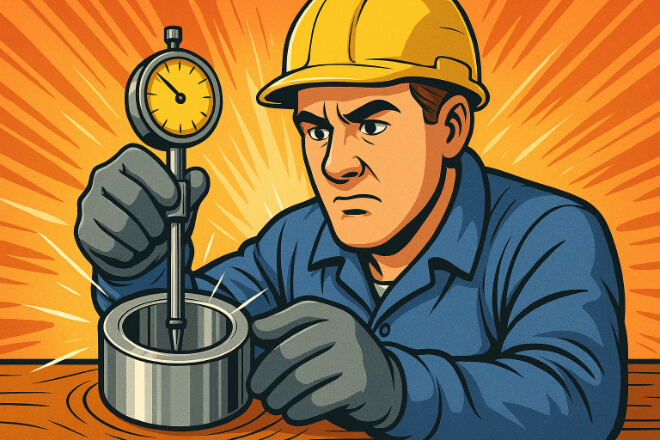
Measuring internal clearance is the process of determining the gap between the bushing’s internal diameter and the shaft that it supports. Here is how to measure internal clearance accurately:
1). Steps to Measure Internal Clearance:
Clean the Bushing and Shaft: Clean the bushing and shaft to remove any dirt or debris that might affect the measurement.
Measure the Shaft Diameter: Use a micrometer to measure the diameter of the shaft. Ensure that the shaft is clean and free of damage that could affect the measurement.
Measure the Internal Diameter of the Bushing: Use a dial bore gauge or internal micrometer to measure the internal diameter of the bushing. Be sure to measure at multiple points to account for any inconsistencies.
Calculate the Clearance: Subtract the shaft diameter from the internal diameter of the bushing. This will give you the internal clearance.
2). Formula for Internal Clearance:
Internal Clearance = Internal Bushing Diameter – Shaft Diameter
How to Measure External Clearance
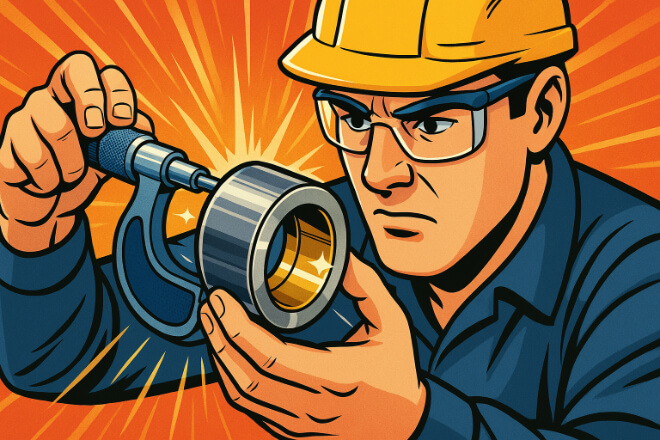
External clearance is the gap between the outside of the bushing and the housing.
Measuring external clearance ensures that the bushing fits securely in the housing while allowing for proper movement.
1). Steps to Measure External Clearance:
Clean the Bushing and Housing: Ensure both the bushing and housing are clean and free of any debris or buildup.
Measure the External Diameter of the Bushing: Use a micrometer to measure the outer diameter of the bushing at multiple points to ensure accuracy.
Measure the Housing Bore: Use a bore gauge to measure the diameter of the housing in which the bushing fits. The housing should be uniform in diameter.
Calculate the Clearance: Subtract the outer diameter of the bushing from the housing bore diameter to determine the external clearance.
2). Formula for External Clearance:
External Clearance = Housing Bore Diameter – External Bushing Diameter
Best Practices for Ensuring Accurate Measurements
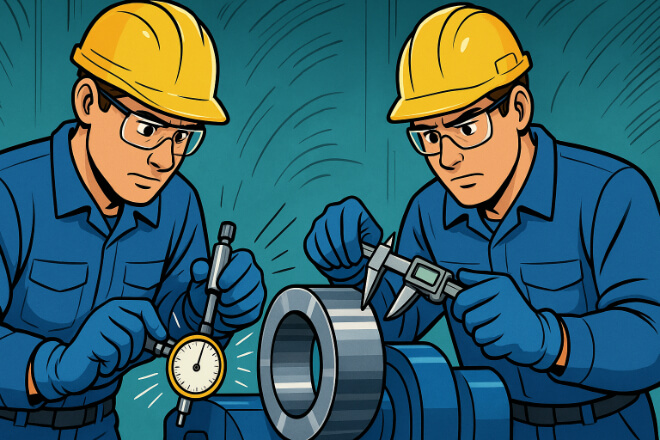
Accurate clearance measurements are essential for ensuring the bushing performs well and lasts for the expected lifespan. Here are some best practices for accurate measurements:
1). Use the Correct Tools
Ensure you are using the correct measuring instruments, such as micrometers, dial bore gauges, or calipers, to achieve precise measurements.
2). Measure Multiple Points
For greater accuracy, measure the bushing at multiple points. Both the internal and external diameters can vary slightly due to manufacturing tolerances, so taking multiple measurements ensures that you get an accurate reading.
3). Maintain Consistency
Always use consistent techniques when measuring. Ensure that you are using the same amount of pressure when taking measurements and that the tools are properly calibrated.
4). Regular Calibration
Ensure that all measuring tools are regularly calibrated to maintain their accuracy. Tools that are not calibrated can give incorrect measurements, leading to incorrect clearance calculations.
Troubleshooting Common Issues with Clearance Measurements
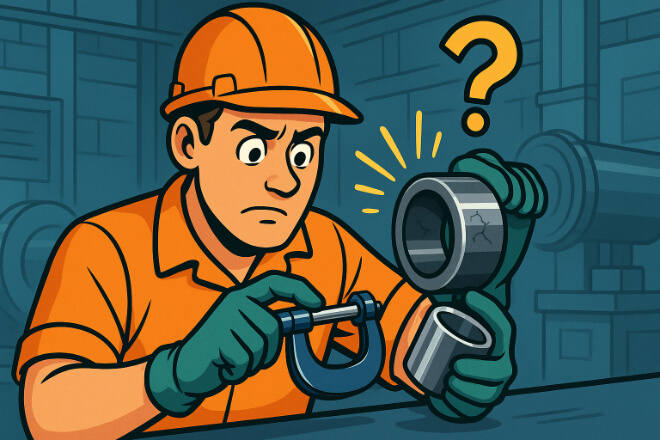
There are a few common issues that can arise when measuring clearance. These issues can affect the accuracy of the measurements and lead to improper bushing performance.
1). Inconsistent Measurements
If your measurements are inconsistent, double-check the tools you are using. Ensure that they are calibrated and in good condition. Always measure at multiple points to account for any variations.
2). Incorrect Tool Usage
Using the wrong tool for the job can lead to inaccurate measurements. For instance, using calipers to measure the internal diameter of a bushing can lead to errors. Always use the appropriate tools for internal and external measurements.
3). Dirt or Debris
Dirt or debris can affect the measurement process, leading to inaccurate readings. Always clean the bushing, shaft, and housing before measuring.
Measuring Tools for Bushing Clearance
| Tool | Mục đích | Use Case |
|---|---|---|
| Micrometer | Measures the shaft and external bushing diameter | External clearance measurement |
| Dial Bore Gauge | Measures internal bushing diameter | Internal clearance measurement |
| Calipers | Measures both internal and external diameters | Versatile, general-purpose measurement |
Phần kết luận
Measuring the internal and external clearance of bushings is crucial for ensuring that they perform optimally and last as long as possible. Proper clearance ensures smooth operation, reduces friction, and prevents premature wear.
By using the right tools and following best practices, you can ensure that your bushings are installed correctly, maintain their performance, and extend their lifespan.
Nếu bạn muốn biết thêm chi tiết về bất kỳ công ty nào, vui lòng liên hệ với chúng tôi.
